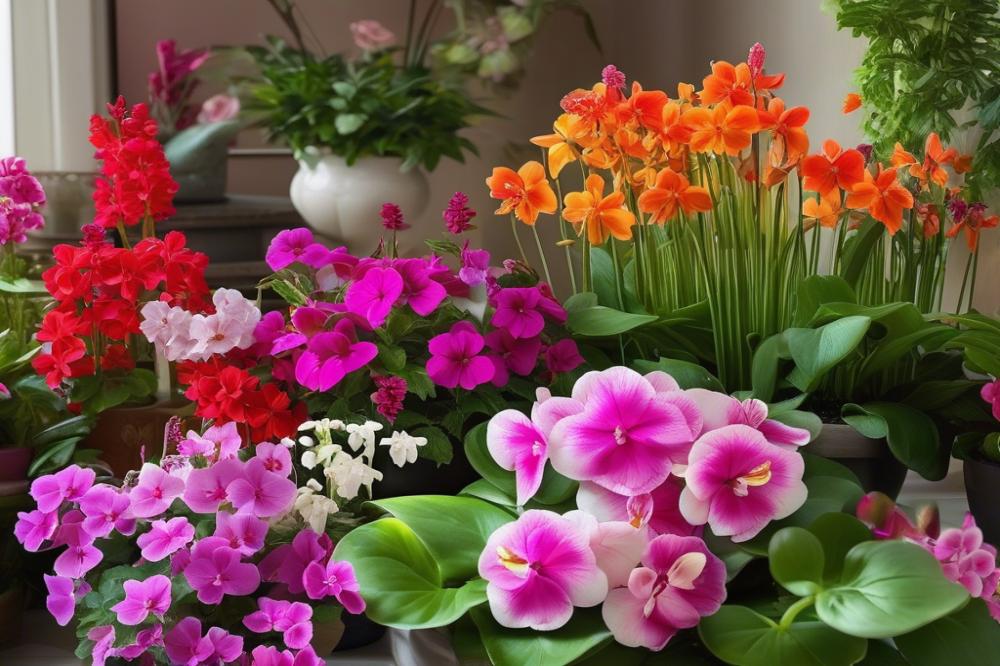Understanding the Importance of Deadheading Roses
In the context of rose care, deadheading refers to the practice of removing spent blooms from a rose bush. This simple technique can have a profound effect on the overall growth and appearance of your plants. When you deadhead roses, it not only enhances the aesthetics of the garden but also promotes healthy, vigorous growth. Without deadheading, plants may focus their energy on producing seeds instead of new flowers.
continuous blooming is essential for anyone looking to keep their garden vibrant throughout the growing season. Regularly removing faded flowers encourages the rose bush to concentrate on developing new buds. This process stimulates flowering, offering a parade of colors in your landscape gardening. Moreover, it contributes significantly to the overall rose health by preventing the development of diseases that often arise from decaying petals.
This article will guide you through the steps of effectively deadheading your roses. We’ll share valuable blooming tips to maximize flower production. Additionally, we’ll touch on how proper flower maintenance ties into pest control and overall plant care. By the end, readers will be equipped with the knowledge needed to keep their roses blooming beautifully.
Understanding Deadheading Roses

Deadheading roses involves the careful removal of spent blooms. This process helps promote new growth by directing the plant’s energy toward producing fresh flowers. In your daily routine of gardening, it can make a noticeable difference in the vibrancy of your landscape. Practicing this technique often leads to healthier plants and more continuous blooming.
The benefits of deadheading extend beyond just aesthetics. Removing faded flowers encourages the rose bush to keep blooming throughout the season. More flowers usually means more color in your garden, transforming your outdoor space into a radiant display. Additionally, it can improve overall rose health by minimizing the risk of pests and diseases which often linger on old flowers.
Types of Roses and Their Deadheading Needs
Different varieties of roses require unique approaches to deadheading. Hybrid teas, for instance, thrive when you prune the stem back to just above a leaf with five leaflets. Meanwhile, floribunda roses benefit from lighter deadheading, where you simply cut off the spent blossoms with the stem. Understanding your specific type is crucial for proper rose care.
Climbing roses typically need more effort. When deadheading these plants, consider how they grow. Prune the spent flowers back to a lateral branch to encourage new growth. Landscape gardening with these types can be rewarding, as their blooms often return in full force after proper care.
When to deadhead roses

Timing plays a crucial role in rose care. Knowing when to prune your blooms can significantly impact their overall health and flowering ability. Early spring often marks an excellent time to begin. However, seasonal variations should not be overlooked. In warmer climates, bulbs may bloom earlier than in cooler areas. This distinction leaves room for observation as your roses awaken.
During the growing season, it is important to remain vigilant. Inspect your plants regularly. After deadheading, roses often respond with new growth. Summer usually brings the highest demand for maintenance. Repeatedly cutting back faded blooms promotes continuous flowering throughout the hottest months.
Signs that Indicate It Is Time to Deadhead
Several visual cues suggest when deadheading is necessary. Withering petals or brown edges indicate it’s time to act. Look for flowers that are past peak beauty. Additionally, a cluttered appearance can signal that some flowers need removing. Keep an eye out for blooms which wilt and droop, as these can detract from the plant’s aesthetics.
Sometimes, rose bushes begin to focus their energy on seed production instead of flowering. This shift can result in fewer blossoms. If you notice that your hybrid tea or floribunda varieties are not producing as many blooms, consider pruning back what no longer contributes to the overall display. Engaging in regular flower maintenance will also deter pests that may thrive on stressed, unhealthy plants.
By understanding these indicators, you elevate your landscape gardening game. Each successful pruning session serves as a step towards vibrant, lush roses. Remember, the goal is to cultivate a garden that flourishes and impresses all who see it. Incorporating these blooming tips will yield rewards in the form of lush blossoms all season long.
How to Deadhead Roses Properly

Deadheading is a crucial part of rose care. This technique encourages continuous blooming throughout the season. Follow these steps for effective flower maintenance that promotes rose health.
Step-by-step guide to deadheading roses effectively
Start by inspecting the plant carefully. Look for faded or wilted blossoms that have turned brown. Next, grab your pruning shears and make a clean cut. Aim for a leaf set that’s just above the first five-leaflet leaf. This spot fosters new growth and extends blooming. Avoid leaving any stem stubs. They can attract pests which can cause problems down the line.
Tools needed for the deadheading process
Before you dive into this task, gather your tools. You’ll need sharp pruning shears for clean cuts. Additionally, gloves are recommended to protect your hands from thorns. A small bucket may come in handy too. Use it to collect spent blooms and keep your gardening area tidy. Having these items ready makes the process smoother.
Best techniques for removing spent blooms without harming the plant
When cutting, always use a slicing motion. This approach prevents crushing the stem and minimizes damage. Focus on cutting at an angle. This prevents water from pooling on the cut surface, reducing the risk of disease. After removing spent flowers, check for any signs of pests or diseases. Regular monitoring helps maintain plant health and decrease risk of infestations.
Remember, deadheading isn’t just about removing flowers. It’s a part of good landscape gardening practices. Use it as a chance to inspect your plants closely. Take this time to admire your roses and adjust care as needed. Overall, incorporate these steps into your routine for thriving seasonal flowers.
Ongoing Rose Care Post-Deadheading

Maintaining your roses after deadheading is crucial for their health and beauty. After you remove spent blooms, they still need love and care. Focus on watering first. Consistent moisture helps stimulate new growth. Roses typically require deep watering once a week, especially during dry spells. This method encourages their roots to reach deeper into the soil.
Fertilizing is another important aspect of rose care. Use a balanced fertilizer, specifically formulated for flowering plants. Applying fertilizer every 4 to 6 weeks promotes robust blooms. Notice how healthy soil translates to vibrant flowers and lush growth. Additionally, consider the timing of your fertilization. Applying it early in the morning or later in the evening prevents excessive evaporation.
Pest control practices are essential, too. Inspect your plants regularly for any signs of insects or disease. Common pests like aphids and mites can damage budding flowers. Using organic pesticides or introducing beneficial insects can help combat these threats. Keeping a watchful eye on your landscape gardening will give your roses a fighting chance.
Blooming tips can make a significant difference in the overall rose health. Pruning spent growth regularly encourages more flowering. It also allows for better air circulation, reducing the risk of fungal infections. Healthy foliage is just as necessary as the blooms themselves.
Incorporate these practices into your daily or weekly gardening routine. Your roses will reward you with continuous, stunning displays. Remember, attentive plant care creates a strong foundation for thriving seasonal flowers. Consistency in your approach leads to a garden that genuinely flourishes. Keep at it, and your efforts will be noticed both by you and anyone who visits your beautiful home.
Tips for Maximizing Blooming
Getting more flowers from your roses is a rewarding experience. Start by learning essential pruning techniques. Cutting back spent blooms encourages new growth. Use sharp shears for clean cuts. This helps avoid unnecessary damage to the plant.
Combining deadheading with good watering techniques can greatly enhance your garden’s beauty. Roses thrive when they receive adequate moisture. Water them deeply but avoid making the soil soggy. This balance keeps the roots healthy and promotes vibrant blooms.
Consider adding mulch around your roses. It helps retain moisture and suppresses weeds. Healthy foliage is crucial for rose care. Strong leaves support a plant’s overall health, leading to more flowers. Regularly inspect for any pests, as they can harm both foliage and blooms.
Integrating seasonal flowers into your landscape gardening can also improve your garden’s appearance. Companion planting can attract beneficial insects while keeping harmful pests at bay. Certain flowers can even provide shade during hot months, protecting your roses.
Fertilization plays an important role, too. Use balanced fertilizers to nourish your plants. Apply these during the growing season to boost blooming capacity. Follow the instructions on the package for safe use. Over-fertilizing can be detrimental.
Staying aware of the rose varieties in your garden is beneficial. Different types may require varying care levels. Knowing the necessary flower maintenance specifics for each variety can greatly aid in optimizing their blooming potential.
Understating the importance of rose health is key. Healthy plants produce more flowers and resist diseases. Regular observation helps you catch any issues early, so be proactive in your plant care routine.
Common Mistakes to Avoid
When aiming for continuous blooming in your garden, avoiding certain mistakes is crucial. Many gardeners assume that deadheading is a simple task. While it may seem straightforward, there are nuances to consider. Cutting flowers too low can inhibit new growth. This mistake can be detrimental to your rose health.
Misconceptions also abound regarding rose care. Some believe that a single cut will suffice for the entire season. However, regular pruning is necessary. Neglecting to monitor your plants can lead to reduced flower production. Additionally, neglecting pest control can impact blooming negatively. Pests can weaken your roses, making them less likely to thrive.
Timing is another critical aspect often overlooked. Many people deadhead too late in the season, missing the chance for additional blooms. Effective flower maintenance means knowing the right moment to prune. If you wait too long, the plant may not have enough energy to produce new flowers.
Improper deadheading can also lead to disease. Not removing spent blooms can result in fungal problems. Mold may develop on the decaying flowers, and this can spread to healthy parts of the plant. Good hygiene is vital in landscape gardening, especially with seasonal flowers.
In summary, being attentive to these aspects can greatly enhance your gardening experience. Understanding the proper techniques in rose care will enrich your blooms. Each step you take in plant care helps create a vibrant environment. Stay informed and adjust your approach as needed to see the best results.
Wrap-Up
Deadheading roses plays a crucial role in achieving a flourishing garden. Regularly removing spent blossoms leads to increased blooms and improved plant health. Understanding the right techniques and timing can make a significant difference. Remember, the goal is not just to clean up, but to encourage new growth.
Ongoing rose care is essential for vibrant flowers throughout the season. Without proper maintenance, even the most stunning varieties may struggle to thrive. Take the time to assess your plants, and don’t shy away from pruning when necessary. With a little effort, you will be rewarded with a spectacular display.
Embracing these practices will transform your gardening experience. Every step you take fosters a healthy environment, benefiting both the plants and your enjoyment. Why not give it a try? The satisfaction of a thriving rose garden makes it all worthwhile.



